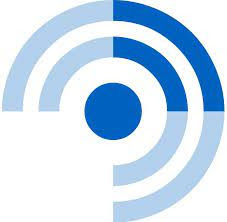
The decision was announced on Thursday during the November Monetary Policy Committee (MPC) and Financial Stability Committee (FSC) briefing by Governor Soraya Hakuziyaremye.
According to the MPC, the decision reflects the Bank's assessment that current monetary conditions are sufficient to contain inflation within the target band. Headline inflation rose to 7.2% in the third quarter of 2025, up from 6.7% in the previous quarter, driven mainly by increases in core and energy inflation. However, fresh food prices eased, helping limit upward pressure on overall inflation.
The briefing also addressed recent concerns over fuel prices, which have added pressure to transport and consumer costs. On November 7, the Rwanda Utilities Regulatory Authority (RURA) announced new pump prices, setting petrol at Frw 1,989 per litre, an increase of Frw 127 from September, while diesel rose to Frw 1,900 per litre, up Frw 92.
Governor Hakuziyaremye noted that although global crude oil prices are projected to decline by nearly 16% in 2025, the recent domestic price adjustments were driven by higher transportation and logistics costs.
The Bank projects headline inflation to average 6.9% in 2025 before easing further to 5.8% in 2026, supported by improving agricultural output and moderating international commodity prices. Even so, the MPC warned that risks remain, including adverse weather conditions that could affect harvests and global geopolitical tensions that may disrupt supply chains and increase imported inflation.
Strong domestic economic performance
Despite a challenging global environment, Rwanda's economy continued to show strong momentum. GDP expanded by 7.8% in the second quarter, with positive growth recorded across all major sectors. In the third quarter, economic activity remained robust, with the Composite Index of Economic Activities rising 13.2%, signalling sustained demand and stronger output, particularly in services and industry.
Merchandise exports recorded a 15% expansion in the third quarter, supported by higher global prices and increased shipments of minerals and coffee. Non-traditional exports, including manufactured products such as wheat flour, cooking oil and animal feeds, grew by 50.5%, reflecting diversification in export earnings.
Imports also rose by 7.4%, mainly due to increased consumption goods including medicine and corn. The rise in imports contributed to a slight widening of the trade deficit, which expanded by 2.8% compared to the same period last year.
Exchange rate and financial market trends
Pressure on the foreign exchange market continued to ease relative to last year. By the end of September, the Rwandan franc had depreciated by 4.03% against the US dollar year-to-date, a notable improvement from 6.49% over the same period in 2024. The central bank attributed this to tightening measures aimed at moderating speculative behaviour and a general weakening of the US dollar globally.
Money market conditions also shifted in line with recent adjustments in the policy stance. Interbank rates declined to 5.85% in the third quarter, down from 7.25% a year earlier, while average deposit rates fell by 165 basis points to 8.67%, reflecting ample liquidity in the banking system. Lending rates eased slightly to 15.78%, with reductions noted across all major loan maturities.
The MPC stated that maintaining the Central Bank Rate at 6.75% remains appropriate to support the country's inflation objectives while sustaining economic growth.
"The MPC will continue monitoring economic developments and is ready to take further action to ensure price stability," Governor Hakuziyaremye stated.



Wycliffe Nyamasege
